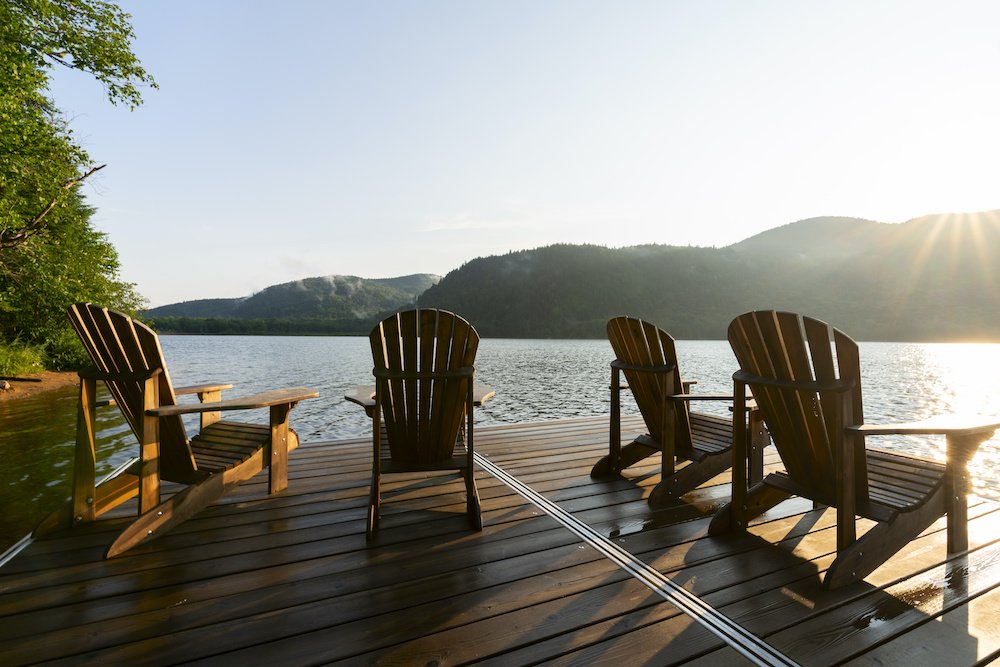Offering the Best Deck Stain for an Outdoor Oasis
Just remember the 4 C's: Color, Cost, Composition, Check
As the spring season approaches, your customers are imagining how to bring their outdoor spaces alive. Prepping the deck is one of the first projects on their "to-do" list.
If you remember the 4Cs, you'll be well on your way to guiding your customers to the perfect stain product. It’s an amazing opportunity for your business to sell a niche product that allows you to stand out in the market. When talking to customers, think about the purchase from their perspective to cover all the bases!
Color: Clear, Semi-Transparent, or Opaque
Are you going for a natural look and want the existing wood to show through? Or do you want to make a statement with color? If you want to see the natural grain and color, choose a clear coat or a semi-transparent stain (which will add a touch of color but still let the wood grain show). If you're looking for a more opaque color, there are many options, like a solid hide stain. Adding C2 Guard to older decks is a great way to make the wood look new again.
Semi-transparent coastal grays like Atlantic Salt and Bleached Gray are popular if you're near the water. Try a deep tone like Carbon, as our friend Cubby Graham used on this upstate NY cabin escape for a bolder look. View all C2 Guard colors here.
Composition: Know the Wood
It's essential to know the state and substrate of the existing deck wood. Is it pressure-treated, older or new wood? For any wood substrate, do a water test to ensure a product like C2 Guard can penetrate the wood. If it rolls off, let it sit for a while until it can absorb the product uniformly. Also, make sure to clean the wood before applying any product.
Regardless of the type of wood, protecting it from within is crucial. Doing so will ensure the wood remains free and is protected from cupping, mold, and mildew. Many stain products sit on the surface, only to be reapplied every season. A product like C2 Guard, which uses nanoparticle technology to form a protective layer from within, can protect and stabilize the wood for up to 10 years on vertical surfaces.
Regarding aesthetic issues, such as fading, rub-off, or other disfiguration due to use or exposure, the solution is often to touch up or blend only a small amount of additional material onto the affected areas. Resist reapplying to the entire substrate until the level of deterioration is widespread and an entire refresher coat is needed.
Another consideration is the content of the stain itself. Many deck stains use harsh chemicals and preservatives. Using a water-based stain like C2 Guard is effective and safe for people, plants, and pets!
This home was treated with C2 Guard four years ago and still performs as it did on day one!
Cost: The Value of Quality
Keep in mind the value proposition of a quality product. You might pay more upfront, but it saves you money and time over the long term. Most common sealers and waterproofers on the market today are water-repelling stains that sit on the surface. Once they break down from scuffing (walking) and peeling (from UV rays), they no longer repel moisture. Water will then be absorbed, subsequently destabilizing the wood, and the cycle of deterioration begins.
Invest wisely. Paying once for a gallon of C2 Guard might cost more, but the savings on product and future labor present time and cost savings. (Note: any stain must be reapplied on the surface over time, but with a product like C2 Guard, the wood remains protected from the inside out).
See C2 Guard in action on this treated versus untreated wood!
Check: Test it First!
One of the most important steps is to test the stain on an existing piece of wood (making sure it's the same wood as the deck) or sample an inconspicuous area. That way, you can view the color in action and determine the best way to apply it based on the product's viscosity. For example, for a product like C2 Guard to properly penetrate wood and masonry surfaces, it's thinner than water, making spraying a better option than rolling or brushing.
The end result is the color of the wood plus the color of the stain together.


